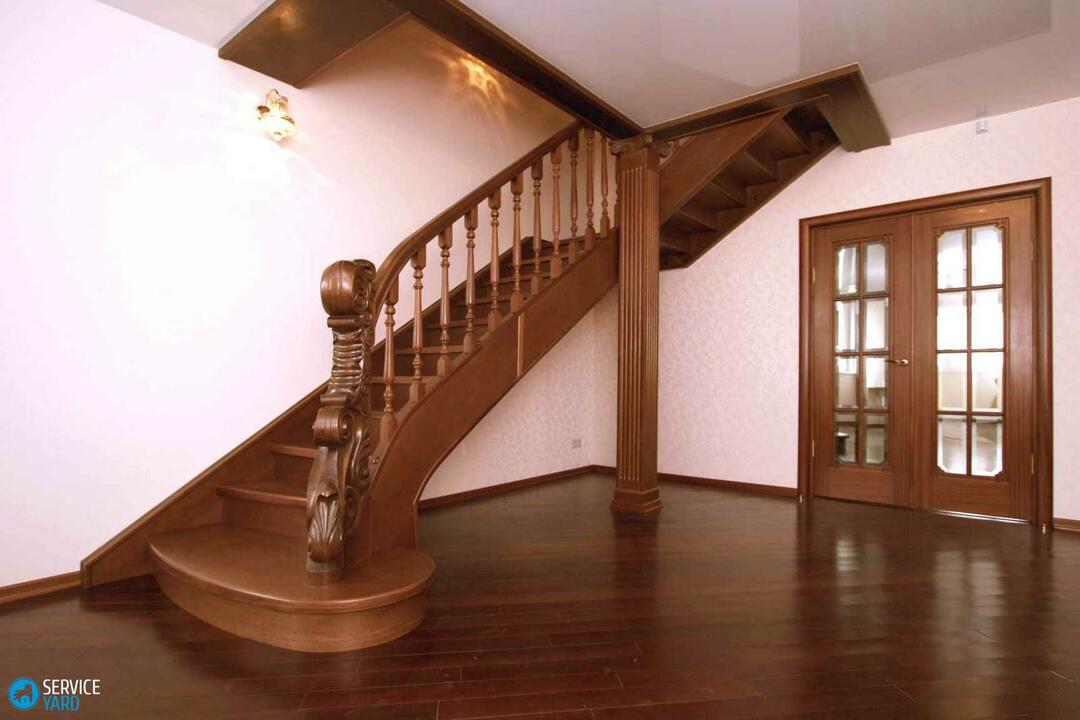None dwelling can not do without heating, which maintains the temperature at the required level. Part of such a heating system in a house or apartment is presented radiator. To this unit benefited, selection is made in accordance with the features of the room.
Effective and adaptable means of heating homes are considered vertical radiators. In addition the organization improve efficiency, the device fits into the interior design without difficulty, as it has a lot of modifications of shapes and sizes.
Content:
- Types of vertical radiators
- Characteristics of vertical radiators
- design solutions
- Pros and cons of vertical radiators
- Mounting
- Precautionary measures
Types of vertical radiators

Designs that have proved themselves in the use of:
- sectional vertical. It consists of separate parts which are joined into a single device - a set of pipes joined together at the top and bottom tubes twice larger diameter;
- panel. This holistic framework within which individual sections are interconnected. Sometimes on the front of the frame to make additional recess. Thus, the heating surface area is increased;
- Tubular. It consists of several tubes that are interconnected;
- Lamellar vertical battery. One plate is united to twenty tubes, compartments are combined into one device. In another plate radiators called convectors.
Each type is represented by structural features: wavy, curved, fan, branched. Thus, it is possible to change the heating area.
- Water. Connected to a central heating system. Used in private homes with gas. Economical, for a short time to heat the air in the room. There are problems with the installation.
- Oil. It is used as an additional device for heating. Poor indoor air is heated with a large area, and in small are not used for safety reasons - the room should have an area of no more and no less than thirty square meters.
- Electrical. As well as oil are used as auxiliary heating systems. Heated part of the room air, so are used as point sources of heat. They consume a lot of electricity.
With small flaws functional species in some cases, they become the best solution.
Characteristics of vertical radiators

Besides saving space diversity and range of shapes and sizes, the devices have the following characteristics:
- heating method;
- The choice of material for the manufacture;
- Mounting methods;
- The method of radiation.
There are features that concern the installation. Depending on the method and the connection method, heat loss is reduced.
Connection is a double-tube and odnotrubchatym. To connect odnotrubchatogo characteristic efficiency, but there are problems with the installation of the unit. Double-tube connection is determined by the speed of heating the air, but it is fraught with great energy.
The water supply if local heating may be upper, lower and mixed. None of the perceived advantages prevents - the quality and heating operation depends on heating.
Introduction embodied in several ways: a diagonal, lateral or lower. To conserve heat and to optimize operation of the device using the principle: top - input, low - output.
Installation is carried out close to the heat source - directly connected to the heating pipes, without elongation. Or remotely, then added to the tube connection. Better to use a close connection.
Principle of operation
The principle of operation of this part of the heating system is no different from a standard battery. The heating of the device is due to the spread of hot material in the tubes that make up the structure. In turn, the heated surface of each tube gives heat to the environment.
Initially heats the upper air mass of the room, and then a warm stream is carried on the remaining area through the process of convection.
design solutions

With intricate form vertical radiator varies functional property of the heating device. But aesthetics is an important condition, therefore, developed a model of vertical radiators, which can be a difficult part, but also to complement the interior.
Simply experiment with water batteries. These devices attached to any form and size. To say that these intricate designs will heat the room, as well as the standard, it is not necessary.
In addition to changing shape in the vertical design radiators installed additional elements - glass plates, mirrors, wooden frames.
imagination of designers went so far that they enhance the functionality of the cells by producing them in the form of shelves, racks, hangers. Sometimes vertical radiators are used as partitions that are zoned premises
In this case, there is a dilemma: use a battery as an unusual and interesting element of the interior, or to heat the room. Perform two functions at the same time the device can not because of the modified parameters.
Reformers in the field of interior change immediately want to change the standard battery on the vertical. But now some people are not at risk.
Most are made from steel, cast iron and aluminum. For the last ten years using lightweight materials - metaloplastik, plastic, lightweight, but strong metals. Of course, the battery is made of cast iron, steel or aluminum will last much longer than the other options.
Increase the area of the surface warm vertical radiator can be without any problems, and the adding section increasing height. The standard battery is also increased due to the additional sections, but the range expansion is small.
Restrictions for heating systems data - it neukreplonnaya or non-insulated wall. Drywall Walls become unreliable fasteners for standing battery.
But plasterboard is constantly used in the decoration of the walls during renovation work. But the standard of the heating is attached to a wall without any problems.
Pros and cons of vertical radiators

Benefits
- Increased heat transfer area, thus air heating is carried out in a short time;
- Thanks to the placement characteristics (vertical radiator can be installed anywhere in the room), it is possible to insulate the colder zone;
- Ease of material from which the manufactured heating design simplifies mounting method;
- With a variety of fastening devices and their simple construction, the radiator unit can be produced without the assistance of expert;
disadvantages
- The high price of the vertical heating device;
- It occupies a large surface area;
- Uneven distribution of heated air in the room;
- Problems with climate control;
- It is necessary to carry out external insulation, since a large amount of heat that radiates vertical battery is spent on heating the wall.
The specified characteristics are improved by changing some parameters of this part of the heating, it is possible to achieve the desired result. Additionally, vertical radiators are used in the modified heating systems. Thus, besides the standard gas radiator can establish oil or electric.
Mounting

Vertical heating system is installed on the fortified walls, otherwise the unit will fall and will pull out of the wall. When installing termoprotsessov thought out way of regulation. To do this, set the flaps and valves on the inlet pipe. If for some reason there will be a malfunction, only those devices to troubleshoot.
Additional amounts of devices for strengthening the vertical heating devices are selected those which are made of a strong material with thoughtful retainers to surfaces. It is better if they are made of steel or cast iron. When the fasteners are fixed to the wall, proceed to embedding the empty gaps.
Necessarily set valve through which air is output from the battery, as such congestion may reduce heating. once it is desirable to also take care of all input-output devices as well as the repair and completion are expensive.
Assemble your own is impossible, as do special calculations on the weight and size, so that the installation does not fall under a load flow of water from the heating system. Therefore it is better to seek help from professionals.
Precautionary measures

The main thing - properly and firmly mounted device because this device is heavy. It is better to install as low as possible from the floor. The wall to which the battery is mounted, further strengthened, finished with refractory material. It is better when the surface of the walls plastered with clay.
radiator mounting points must be evenly distributed over the entire area of the device. The bigger, the better. They must be reliable and strong, otherwise the device eventually deforms under its own weight and fall.
If the model is cheap, there are problems with the regulation of heat that is released, as there is no mechanism for climate control. In such cases, further mounted cranes and vozduhootvodniki.
Oil space heating devices are also installed in places where the risk of fire is minimized. Do not expose the structure to mechanical damage. To avoid burns, make better use of safety nets that cover the screen adaptation. Carefully monitor the serviceability of the electrical component and the integrity of the mechanism.
The electric heater may be short-circuiting. Can not be used in rooms with high humidity, and should be put away from water supply sources.
Problems and solutions
The most common faults occur in the radiators that are connected to the heating system. Are due to problems with the water hardness, which leads to clogged pipes. In this case, the apparatus is partially disassembled and clean. The reason for cooling is by air pockets, then opened Breather, performing the procedure every hour for six hours.
If the heating capacity does not improve, it is necessary to cause the master. Sometimes the failure is in the design of the device - the offset dividing valve. Only a master can decide the issue.
The oil devices cause malfunction becomes an oil leak, faulty electrical system. Electric batteries are broken only due to a malfunction of the electric arrangement of the interior.



